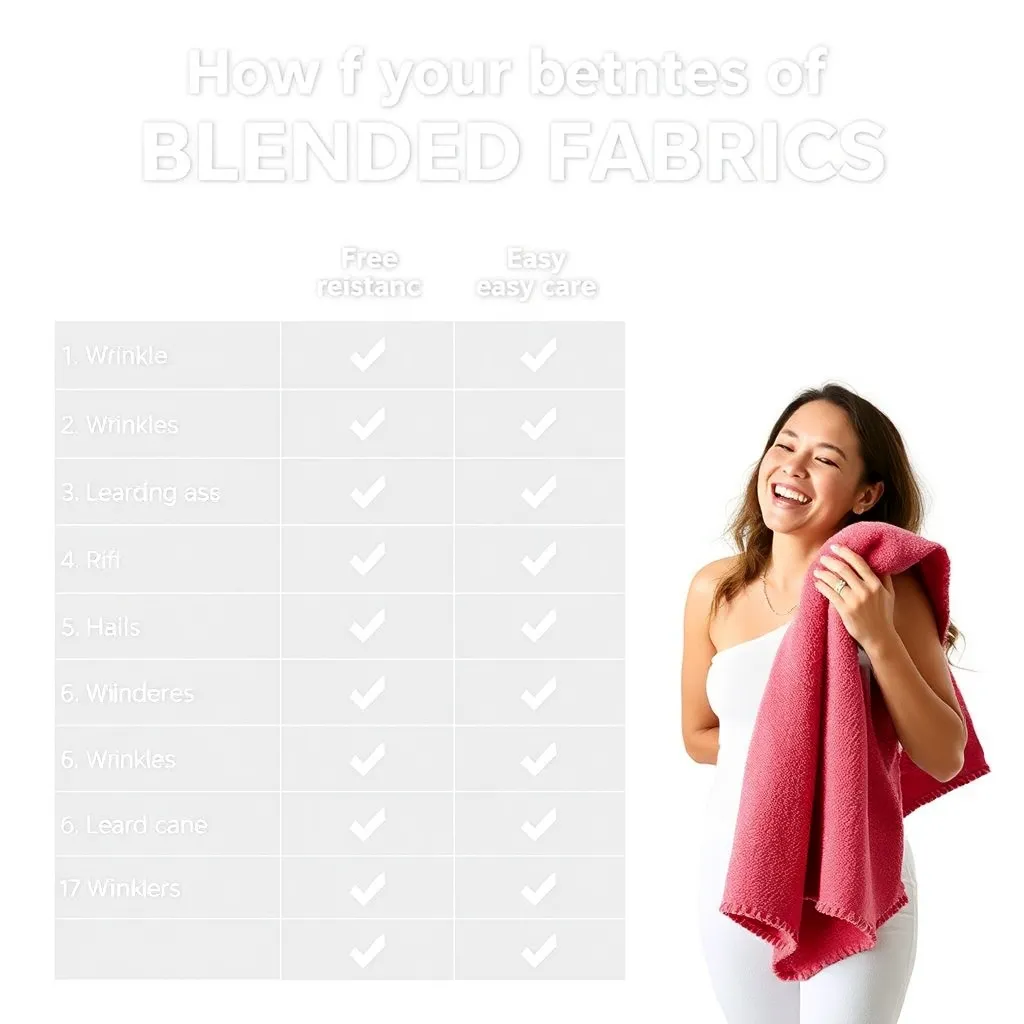Cotton Conundrum: Weighing the Pros and Cons of Blended Fabrics [Thumbnail: An image of a cotton plant with a question mark]
One of the primary advantages of blended fabrics is their enhanced durability and wrinkle resistance. The addition of synthetic materials like polyester or rayon can strengthen the fabric, making it less prone to tears and snags, and reducing the need for ironing. This makes blended fabrics a great choice for clothing that needs to withstand heavy wear and tear, such as activewear or work uniforms. According to the American Chemistry Council, polyester is particularly effective at resisting wrinkles and can even help reduce the amount of energy needed to care for clothing.
However, blended fabrics also have some drawbacks. For example, they can be less breathable than 100% cotton fabrics, which can make them uncomfortable to wear in warm weather. Additionally, the synthetic materials used in blended fabrics can be less environmentally friendly than natural fibers like cotton. The production of polyester, for instance, requires large amounts of energy and resources, and can generate significant greenhouse gas emissions.
Despite these drawbacks, blended fabrics can still be a good choice for certain types of clothing. For example, they can be ideal for outerwear or clothing that needs to be waterproof or stain-resistant. They can also be a more affordable option than 100% cotton fabrics, which can be beneficial for budget-conscious consumers. Ultimately, the decision to choose a blended fabric or 100% cotton fabric will depend on your individual needs and preferences.
The Pros of Blended Fabrics
One of the primary benefits of blended fabrics is their wrinkle-resistance. Unlike 100% cotton fabrics, which can become wrinkled and creased easily, blended fabrics tend to retain their smooth texture and appearance even after multiple washes and wearings. This makes them ideal for busy individuals who don’t have the time or inclination to iron their clothes regularly.
In addition to being wrinkle-resistant, blended fabrics are often easier to care for than their 100% cotton counterparts. They can typically be machine washed and dried, and may require less ironing or steaming to maintain their appearance. This convenience factor makes blended fabrics a great choice for people who value ease of care and maintenance.
Another advantage of blended fabrics is their affordability. Because they often combine cotton with synthetic fibers like polyester or rayon, blended fabrics can be produced at a lower cost than 100% cotton fabrics. This makes them a more budget-friendly option for consumers who want high-quality fabrics without the hefty price tag.
Finally, blended fabrics offer improved durability and resistance to shrinkage, making them well-suited for high-wear items like towels and bedding. According to the Cotton Incorporated website, blended fabrics can retain their shape and size even after repeated washing and drying, which can help extend the life of these essential household items.

The Cons of Blended Fabrics
One of the primary concerns with blended fabrics is their potential lack of breathability. When compared to cotton, blended fabrics can trap heat and moisture, leading to discomfort and excessive sweating. This is particularly problematic for individuals who engage in regular physical activity or live in warm climates, as it can exacerbate feelings of unease and fatigue.
Another significant drawback of blended fabrics is their environmental impact. While cotton has its own set of environmental concerns, blended fabrics often require more resources to produce, which can contribute to a larger carbon footprint. Furthermore, many blended fabrics contain synthetic materials like polyester, which can break down into microplastics and contribute to pollution in our waterways and ecosystems. According to the United States Environmental Protection Agency, microplastics have been found in oceans and waterways around the world, highlighting the need for more sustainable textile production practices.

The Case for 100% Cotton
The enduring popularity of 100% cotton fabrics can be attributed to their unique characteristics that make them a preferred choice for many consumers. One of the primary advantages of cotton is its natural and biodegradable properties, which ensure that it is gentle on the skin and environmentally friendly.
Cotton’s breathability is another significant benefit, allowing for excellent airflow that keeps the wearer cool and comfortable. This feature makes cotton clothing ideal for warm weather or high-intensity activities. Furthermore, cotton’s natural fibers enable it to absorb and evaporate moisture quickly, reducing the risk of skin irritation and discomfort.
The durability of cotton is also a significant factor in its popularity. Unlike some blended fabrics, cotton can withstand repeated washing and wear without losing its shape or softness. This means that cotton clothing can remain a staple in one’s wardrobe for years to come, making it a worthwhile investment for many consumers.
Conclusion: Weighing the Options
When it comes to choosing between blended fabrics and 100% cotton, it’s essential to consider your lifestyle and priorities. If you’re someone who values convenience and is always on-the-go, blended fabrics might be the better option. According to the American Cleaning Institute, blended fabrics are often easier to care for and can withstand repeated washing and drying without losing their shape or softness.
On the other hand, if you’re looking for a more natural and breathable option, 100% cotton is still a great choice. Cotton is a natural fiber that allows for airflow and moisture wicking, making it ideal for people who tend to sweat a lot or have sensitive skin. Additionally, 100% cotton fabrics are often more durable and can last longer with proper care.
It’s also worth considering the environmental impact of your fabric choice. While blended fabrics may be more affordable, they often contain synthetic materials like polyester, which can take hundreds of years to decompose. In contrast, cotton is a biodegradable and renewable resource. According to the Cotton Incorporated Lifestyle Monitor Survey, 70% of consumers consider the environmental impact of their clothing purchases, making 100% cotton a more sustainable option.
Ultimately, the decision between blended fabrics and 100% cotton comes down to your individual needs and priorities. By weighing the pros and cons of each option, you can make an informed decision that’s right for you and your lifestyle. Whether you prioritize ease of care, natural materials, or sustainability, there’s a fabric option out there that’s perfect for you.
